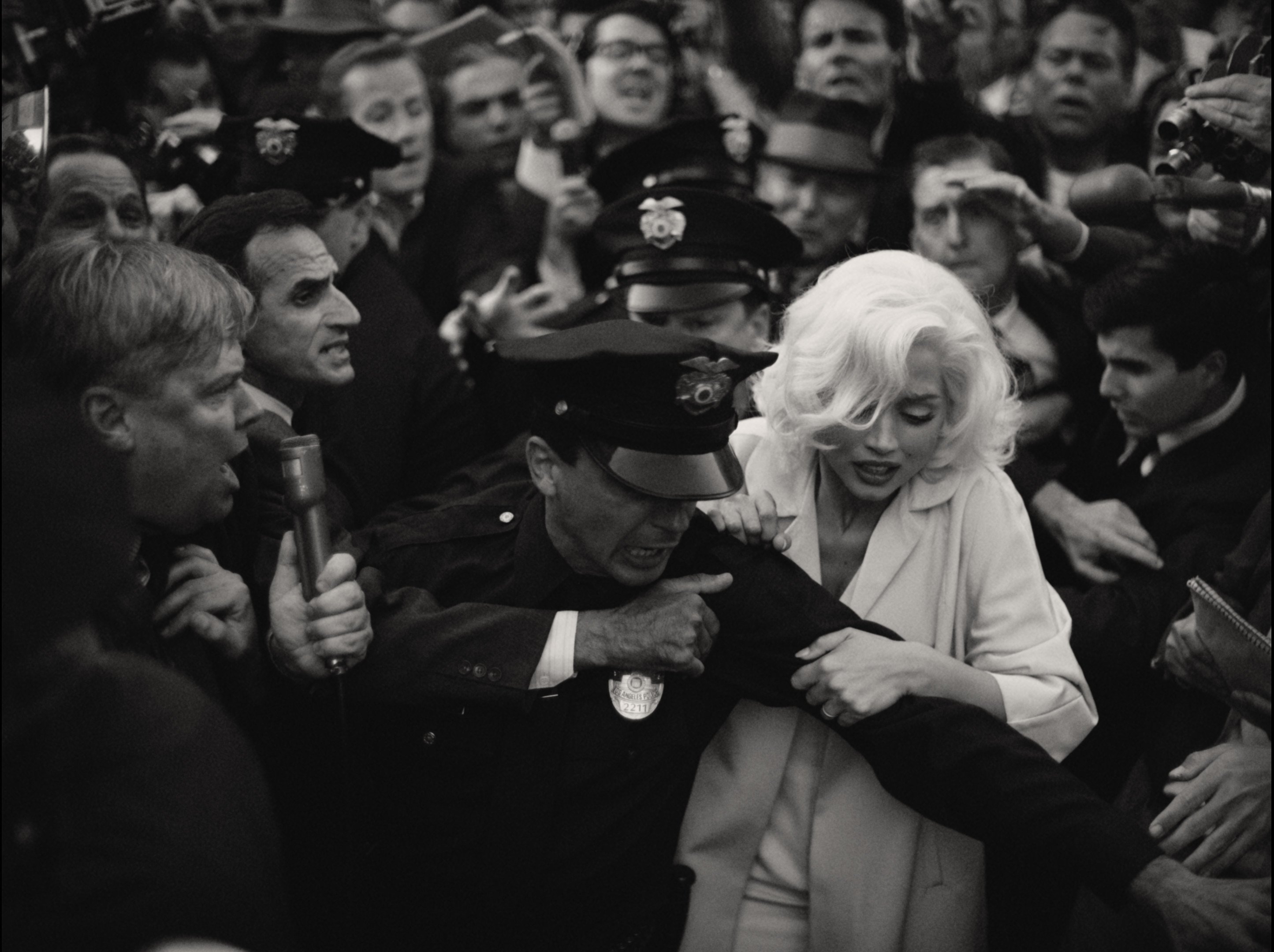
On Wednesday (Sept. 28), Netflix released Blonde, a flashy, fictitious account of Marilyn Monroe’s life. The nearly three-hour film stars Ana de Armas as the late star.
Directed by Andrew Dominik and based off Joyce Carol Oates’s novel of the same name, this is just the latest film to cash in on Monroe’s legacy. However, Dominik’s maximalist and hypersexualized approach to Monroe’s story is drawing criticism from fans and critics alike. Blonde is facing backlash for masquerading as a biopic when it’s more of a loose retelling that exploits Monroe and her trauma, featuring unsavory depictions of sexual violence, abortion, and suicide.
The criticisms of Blonde are further compounded by Dominik’s inability to clearly convey his intentions with the film. Some of his remarks have come off as quite callous. In an interview with Screen Daily he said, “It’s a demanding movie. If the audience doesn’t like it, that’s the fucking audience’s problem. It’s not running for public office. It’s an NC-17 movie about Marilyn Monroe, it’s kind of what you want, right? I want to go and see the NC-17 version of the Marilyn Monroe story.”
He went on to tell the British Film Institute‘s Christina Newland that he wasn’t very interested in telling Monroe’s entire life story. There are details that are omitted from the film, like the fact that Monroe created her own production company and her support of Ella Fitzgerald’s fight against segregation. “That stuff is not really what the film is about,” he said. “It’s about a person who is going to be killing themself.”
Dominik’s fixation on Monroe’s tragic death at the age of 36 doesn’t end there. The death scene in the film was shot in the same room where she died, which some viewers criticized for being exploitative.
Newland also shared an outtake from her interview on Twitter, in which the director referred to the young women in Gentlemen Prefer Blondes as “well-dressed whores.” NPR’s Aisha Harris replied to Newland’s tweet, writing, “This explains every single second of BLONDE.”
While on the film’s press run, de Armas has been constructing a narrative that Monroe would have approved of the film, despite the film being about a fictionalized version of her.
At the Venice Film Festival de Armas said that when filming at Monroe’s former home she felt the late star’s presence: “I felt a strong sensation, there was something in the air. I think she was approving what we were doing. Maybe this sounds very mystical, or something but it was true. We felt it.” It doesn’t end there. In addition, in an interview with AnOther Magazine, de Armas claims that the cast and crew asked Monroe for her permission by leaving a card at her grave. The actor also shared in an interview with Variety that she visited Monroe’s grave several times to pay her respects.
Between the director’s comments and the critical distaste for the film — The New York Times calls it “the latest necrophiliac entertainment to exploit [Monroe]” — Blonde is leaving viewers cold.
